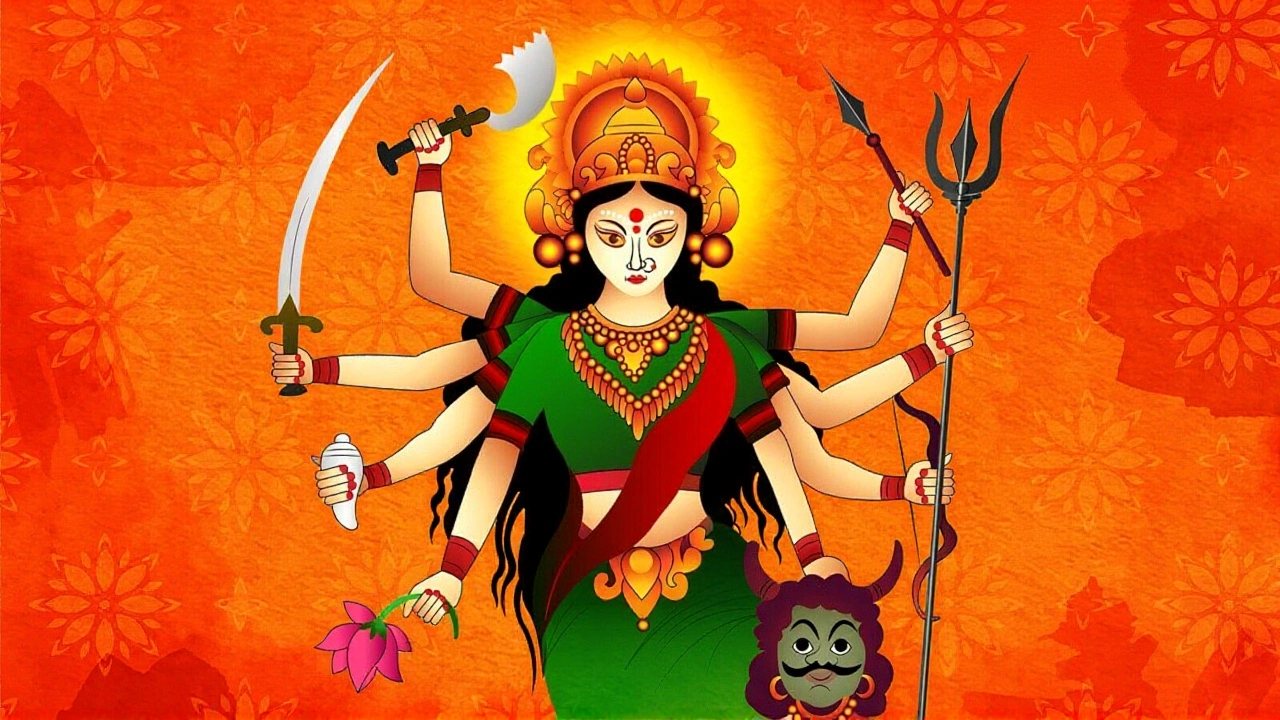Maha Ashtami – Meaning, Traditions & How to Celebrate
Ever wondered why Maha Ashtami feels so vibrant during Navratri? It’s the day when devotees honor the fierce form of Goddess Durga, celebrating her victory over evil. The name itself means “great eighth,” marking the eighth night of the nine‑night festival. Families gather, lamps flicker, and chants echo, creating a mix of devotion and joy.
Significance of Maha Ashtami
On this night, myth says Durga fought the demon Mahishasura and emerged triumphant. That battle symbolizes the triumph of good over negativity—something many of us can relate to in everyday life. Because of this, people treat Maha Ashtami as a turning point in the Navratri journey, a moment to let go of doubts and invite positive energy.
Regional customs add flavor. In West Bengal, it’s part of Durga Puja’s climax, while in Gujarat and Karnataka, you’ll find elaborate garba circles that go on till the early morning. No matter where you are, the core idea stays the same: praising strength, courage, and protection.
Typical Rituals and Festive Foods
Most homes start the evening by cleaning the altar and setting up a fresh idol or picture of Durga. Fresh flowers—especially marigold and jasmine—are arranged in bright garlands. The air fills with the scent of incense, and a priest or senior family member recites the “Mahishasura Mardini” stotra, a hymn that narrates the goddess’s victory.
After the prayers, the real festivity begins. Offerings of sweets like laddoo, modak, and payasam are placed before the deity. In many places, people break a coconut, a symbolic act of destroying ego. The broken coconut pieces are later shared as prasad, reminding everyone of humility.
Food on Maha Ashtami often features vegetarian dishes, reflecting the purity of the day. You’ll find dishes like aloo puri, paneer tikka, and a special rice preparation called “Brahma Bhoj.” Some families also prepare “Maha Ashtami Vrat Kheer,” a sweet rice pudding made with milk, sugar, and nuts.
Another popular tradition is “Kanya Puja,” where nine young girls—representing the nine forms of the goddess—are welcomed and offered food. This act honors the feminine divine and teaches respect for women.
If you’re looking for a modern twist, try a virtual darshan of Durga idols streamed from famous temples. Many community groups host online chants, allowing everyone to join from the safety of their homes.
In short, Maha Ashtami blends devotion, cultural expressions, and delicious food into a night that feels both powerful and warm. Whether you’re a lifelong practitioner or just curious, joining a local event or even creating a small altar at home can give you a taste of the energy that fuels this special day.
So, light a lamp, sing a few verses, and enjoy the festive spread. Let Maha Ashtami remind you of resilience and the joy that comes from honoring the divine within and around us.

Maha Ashtami 2025 sees millions honor Goddess Durga with Kanya Puja, Sandhi rituals and social media wishes on September 30, marking a rare convergence with Vijaya Dashami.
Read More